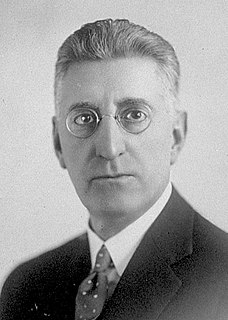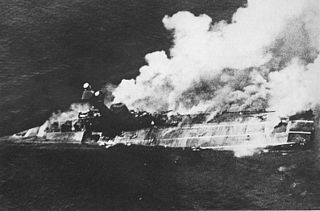Related Research Articles

The Liberal Party of Australia , commonly known as the New South Wales Liberals, is the state division of the Liberal Party of Australia in New South Wales. The party currently governs in New South Wales in coalition with the National Party of Australia (NSW). The party is part of the federal Liberal Party which governs nationally in Coalition with the National Party of Australia.

Reginald Walter Darcy Weaver was an Australian conservative parliamentarian who served in the New South Wales Legislative Assembly for 28 years. Serving from 1917 in the backbenches, he entered the cabinet of Thomas Bavin in 1929 as Secretary for Mines and Minister for Forests until he returned to opposition in 1930. Following the success of the United Australia Party in the 1932 election, Weaver returned as the Secretary for Public Works and Minister for Health in the Stevens ministry.

The South West Pacific theatre, during World War II, was a major theatre of the war between the Allies and the Axis. It included the Philippines, the Dutch East Indies, Borneo, Australia and its mandate Territory of New Guinea and the western part of the Solomon Islands. This area was defined by the Allied powers' South West Pacific Area (SWPA) command.

The 1943 Australian federal election was held in Australia on 21 August 1943. All 74 seats in the House of Representatives and 19 of the 36 seats in the Senate were up for election. The incumbent Labor Party, led by Prime Minister John Curtin, defeated the opposition Country–UAP coalition led by Arthur Fadden in a landslide.
The Liberal Democratic Party (LDP) was an Australian breakaway political party of the United Australia Party that contested the 1943 federal election and the 1944 New South Wales state election. Formed in 1943, it was replaced by the New South Wales division of the Liberal Party of Australia in January 1945.

John Henry Prowse was an Australian politician. Born in Adelong, New South Wales, he was educated at public schools and then at Kings College, Melbourne. He became an insurance agent and then a station owner in Western Australia, where he eventually became a Perth City Councillor, serving as Mayor 1913–1914. In 1919, Prowse was elected to the Australian House of Representatives as the member for Swan, representing the Farmers' and Settlers' Association, which in 1920 solidified to become the Australian Country Party. Prowse transferred to the new seat of Forrest in 1922, allowing party colleague Henry Gregory to contest Swan. He served as chairman of committees from 1934 to 1943, the first member of his party to hold the position.
This is a list of members of the South Australian House of Assembly from 1941 to 1944, as elected at the 1941 state election:
This is a list of members of the Western Australian Legislative Assembly between the 1943 election and the 1947 election, together known as the 18th Parliament. In January 1945, the Nationalists, officially known as the National Party of Western Australia, reformed as the Liberal Party under the leadership of Robert McDonald, and all Nationalist MLAs' allegiances changed accordingly.

Prior to World War II, the Indian Ocean was an important maritime trade route between European nations and their colonial territories in East Africa, the Arabian Peninsula, British India, Indochina, the East Indies (Indonesia), and Australia for a long time. Naval presence was dominated by the Royal Navy Eastern Fleet and the Royal Australian Navy as World War II began, with a major portion of the Royal Netherlands Navy operating in the Dutch East Indies and the Red Sea Flotilla of the Italian Regia Marina operating from Massawa.
This is a list of members of the Australian Senate from 1941 to 1944. Half of its members were elected at the 23 October 1937 election and had terms starting on 1 July 1938 and finishing on 30 June 1944; the other half were elected at the 21 September 1940 election and had terms starting on 1 July 1941 and finishing on 30 June 1947. The process for filling casual vacancies was complex. While senators were elected for a six-year term, people appointed to a casual vacancy only held office until the earlier of the next election for the House of Representatives or the Senate.
This is a list of members of the Tasmanian House of Assembly between the 13 December 1941 election and the 23 November 1946 election. The term was elongated due to World War II.
Members of the New South Wales Legislative Assembly who served in the 33rd parliament held their seats from 1941 to 1944. They were elected at the 1941 state election, and at by-elections. During this term, the opposition United Australia Party merged with the new Commonwealth Party to form the Democratic Party in late 1943. The merger was only at a state level, however; the federal United Australia Party, however, remained intact during this period. The Speaker was Daniel Clyne.</ref>
This is a list of members of the Victorian Legislative Assembly from 1943 to 1945, as elected at the 1943 state election.

The 1941 New South Wales state election was held on 10 May 1941. This election was for all of the 90 seats in the 33rd New South Wales Legislative Assembly and was conducted in single-member constituencies with compulsory preferential voting.
The Democratic Party was a short-lived, urban, conservative political party which was active in New South Wales, Australia between November 1943 and 1945. The Democratic Party was formed in November 1943 by the union of the United Australia Party (UAP) in New South Wales and the Commonwealth Party. It was one of the main conservative parties in New South Wales and contested the 1944 state election as a coalition with Country Party.
The Commonwealth Party was a short-lived, urban, conservative political party in New South Wales between May 1943 and January 1944.

The 1944 New South Wales state election was held on 27 May 1944. It was conducted in single member constituencies with compulsory preferential voting and was held on boundaries created at a 1940 redistribution. The election was for all of the 90 seats in the Legislative Assembly.
This is a list of electoral district results for the 1944 New South Wales state election.
